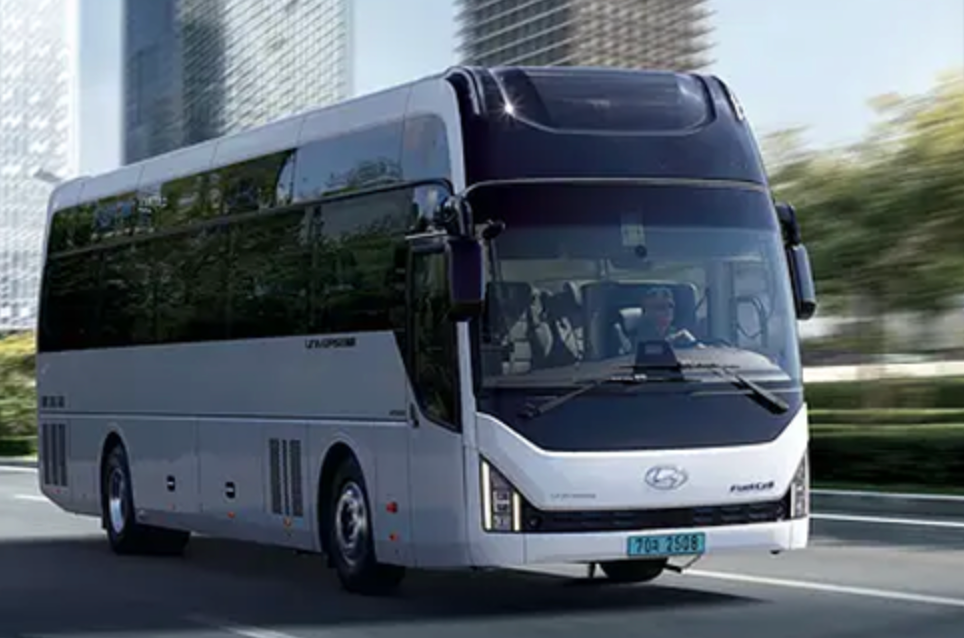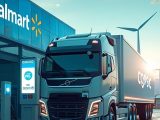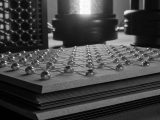
Hyundai Unveils 960 km-Range Hydrogen Fuel Cell Bus, Redefining Zero-Emission Transport
August 7, 2025Hyundai Motor Company has rolled out its snazzy new 2026 Universe hydrogen-electric bus in South Korea, and it’s nothing short of impressive: up to 960.4 km driving range on a single fill-up. That kind of stretch cements Hyundai’s reputation as a real trailblazer in zero-emission technology for long-haul public transport.
If you’ve ever lingered at a charging station, watching the clock tick by, imagine pulling in, topping off your tank in ten minutes flat, and cruising for nearly 1,000 kilometers. That’s exactly the shift Hyundai wants to spark. Here are the standout features:
- Range: A whopping 960.4 km per hydrogen refill—about a 51% jump over the outgoing Universe model.
- Powertrain: A 350 kW hydrogen fuel cell stack teamed with a dual-motor integrated drivetrain for smooth, robust performance.
- Safety: Five-minute fire-delay barrier in case of battery thermal events, plus automatic hydrogen isolation the moment sensors detect a collision.
- Comfort: A 12-meter premium trim option featuring plush, reclining seats, wireless charging pads and ample USB-C ports.
- Validation: Proved its mettle in NEOM’s high-altitude tests and is already rolling out under Abu Dhabi’s green transport program.
Technical Innovations
Under the hood, the 2026 Universe leans on Hyundai’s in-house hydrogen fuel cells to generate electricity—pairing compressed hydrogen with oxygen and producing only water vapor as exhaust. Dual high-torque motors drive the rear axle, while an integrated drivetrain evens out power delivery and helps parts last longer. On top of that, regenerative braking recovers up to 25% of kinetic energy, sending it back to the onboard battery pack for extra efficiency.
Hyundai hasn’t skimped on safety, either:
- Real-time Monitoring: A network of sensors keeps tabs on pressure, temperature and voltage across hydrogen tanks and battery modules.
- Fire-Delay Mechanism: If a cell goes thermally unstable, a five-minute barrier stalls any flames—enough time to get everyone off safely.
- Automatic Isolation: On impact, high-pressure lines and electrical circuits seal themselves off to curb leaks.
The bus’s carbon-fiber-reinforced hydrogen tanks weigh about 30% less than traditional steel units, offsetting the extra heft of the fuel cell gear and keeping the ride agile and efficient.
Business & Industry Implications
With transit agencies under pressure to hit carbon-neutral goals, the 2026 Universe swoops in and tackles two major headaches: range anxiety and downtime. Thanks to a ten-minute refuel time—on par with diesel—buses stay in service longer and cut idle time. That’s music to fleet operators’ ears.
By raising the bar, Hyundai is nudging rivals to ramp up their R&D or risk losing ground in the booming hydrogen fuel cells space. It’s also giving a jolt to hydrogen infrastructure expansion—operators in Asia and the Middle East are already greenlighting station rollouts for busy routes. Possible ripple effects include:
- Infrastructure Investment: Governments and private backers likely to pour more into green hydrogen production and refueling networks.
- Supply Chain Growth: Higher demand for carbon-fiber tanks, fuel cell stacks and electric motors, benefiting component makers upstream.
- Regulatory Alignment: Tighter emissions rules in Europe and North America could unlock fresh markets for the Universe by 2026.
- Cost Dynamics: Learning-curve gains and scaled production could nudge the total cost of ownership closer to diesel by the late 2020s.
Field Trials & Validation
Before commercial launch, Hyundai put the 2026 Universe through its paces in real-world extremes. In NEOM’s mountainous terrain, buses tackled climbs up to 1,800 meters under desert heat soaring past 45 °C, all while delivering consistent power—with no notable wear after racking up 1,000 km of combined runs. Over in Abu Dhabi’s coastal tests, these buses logged over 200,000 km without a single hydrogen leak—proof positive of a safety-first design. Trials also covered:
- Cold-Start Trials: Operations close to 0 °C to ensure the fuel cell stack fires up reliably in chillier climes.
- High-Frequency Cycles: Running more than 50 service routes a day to mimic peak urban schedules.
- Remote Diagnostics: Cloud-based monitoring that flags anomalies within minutes, so maintenance teams can swoop in fast.
Passenger Experience & Amenities
Hyundai didn’t just focus on the engine—they peppered the 2026 Universe with passenger-friendly touches to boost loyalty and stand out in a crowded field:
- 12-Meter Premium Trim: Wider aisles, modular seating layouts and designer lighting.
- Comfort Tech: Reclining leather seats with massage functions, plus individual climate controls.
- Connectivity: High-speed Wi-Fi, multiple USB-C ports and wireless smartphone charging pads.
- Operational Convenience: Remote-controlled cargo locks and digital driver displays showing real-time traffic and hydrogen station status.
- Accessibility: Low-floor design with automated ramps for wheelchair users—boarding couldn’t be smoother.
These extras help the Universe compete not just on zero-emission technology and range, but on overall passenger satisfaction.
Policy Support & Partnerships
South Korea’s government has named hydrogen a key part of its industrial decarbonization playbook, earmarking over $2 billion in research grants and infrastructure perks through 2030. Hyundai’s bus debut syncs up nicely with several public-private tie-ups, such as:
- NEOM Hydrogen Program: Teaming with Saudi Aramco and NEOM developers to churn out green hydrogen via solar-powered electrolysis.
- Abu Dhabi Green Transport Initiative: Partnering with the Department of Municipalities and Transport to swap diesel coaches for Universe buses on busy corridors.
- Domestic Rollout: Working with the Korea Hydrogen Foundation to add 30 high-pressure refueling stations at major bus depots by 2027.
These alliances not only lock in supply and support but also pave the way for long-term service contracts, easing the switch to clean energy fleets for transit authorities.
A Legacy of Hydrogen Innovation
Hyundai’s hydrogen story goes back to the early 2000s, when it first dove into fuel cell research. The company rolled out its first commercial fuel cell vehicle, the ix35 Fuel Cell, in 2013, followed by the NEXO SUV in 2018. Shortly after, the inter-city Universe bus hit the roads, offering up to 635 km per refill. Today’s 2026 model ups that range by more than half—thanks to a decade of R&D, fuel cell stack tweaks and savvy use of lightweight materials.
Looking Ahead
As fleet planners mull the next steps in decarbonized transport, here’s what’s on the horizon:
- Global Rollouts: Hyundai aims to kick off pilot programs in Europe and North America by late 2026, testing local hydrogen infrastructure.
- Performance Upgrades: Future versions might top 1,200 km range or even pack level-4 autonomous driving features.
- Cost Reductions: Bigger production runs and a broader supplier base could shave 20–30% off unit costs within three years.
By blending diesel-like uptime with zero-emission technology, Hyundai is betting industrial routes will lean on hydrogen as their backbone—even as battery electrics spread across urban and short-haul markets.
About Hyundai Motor Company
Founded in 1967 in South Korea, Hyundai Motor Company builds passenger cars, commercial vehicles and advanced powertrain systems like hydrogen fuel cells and battery electrics. A pioneer in the hydrogen mobility space, Hyundai has driven projects from NEOM’s green hydrogen ecosystem to Abu Dhabi’s zero-emission bus fleets—showcasing its long-term commitment to sustainable urban growth.
What to Watch Next: Keep an eye on new refueling station rollouts and early fleet performance stats from Abu Dhabi and NEOM. Those numbers will tell us if the nearly 1,000 km-range Universe has what it takes to reshape the economics of zero-emission public transport.



 With over 15 years of reporting hydrogen news, we are your premier source for the latest updates and insights in hydrogen and renewable energy.
With over 15 years of reporting hydrogen news, we are your premier source for the latest updates and insights in hydrogen and renewable energy.